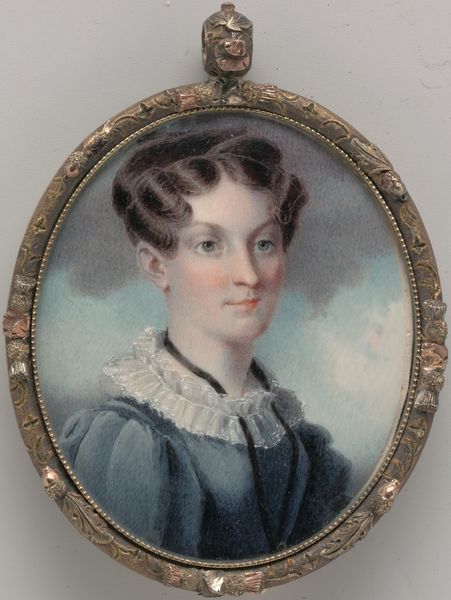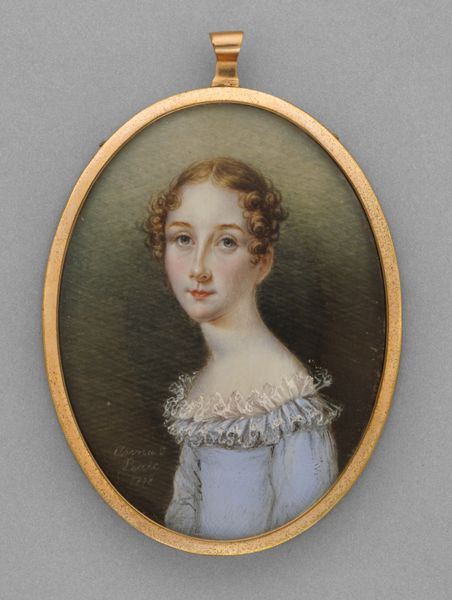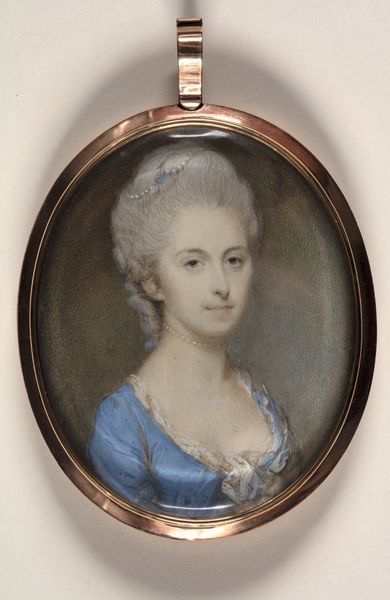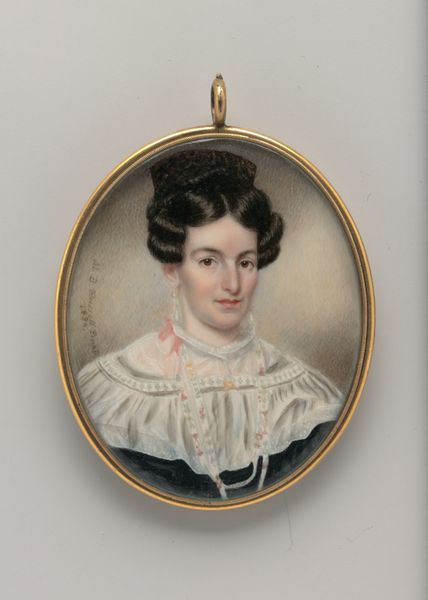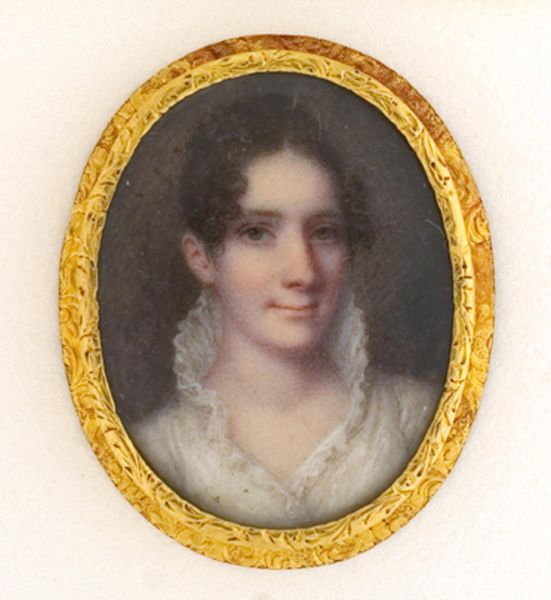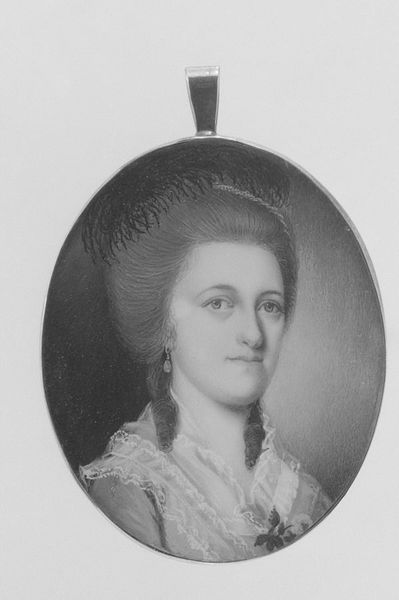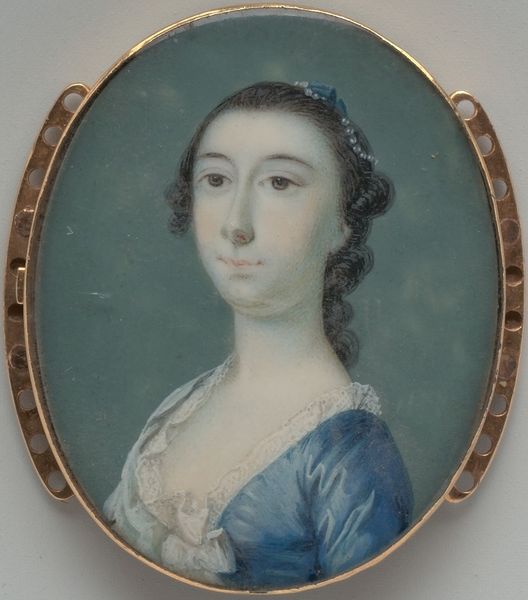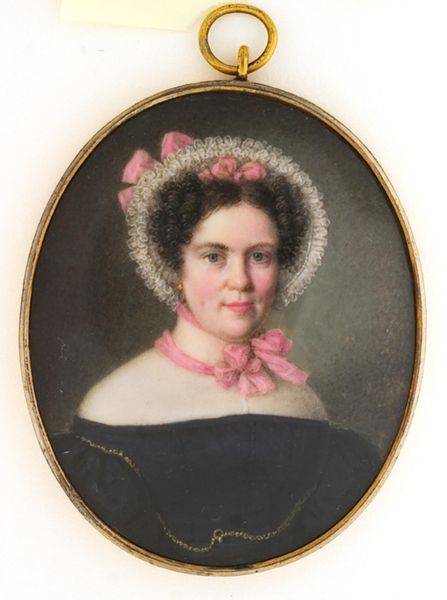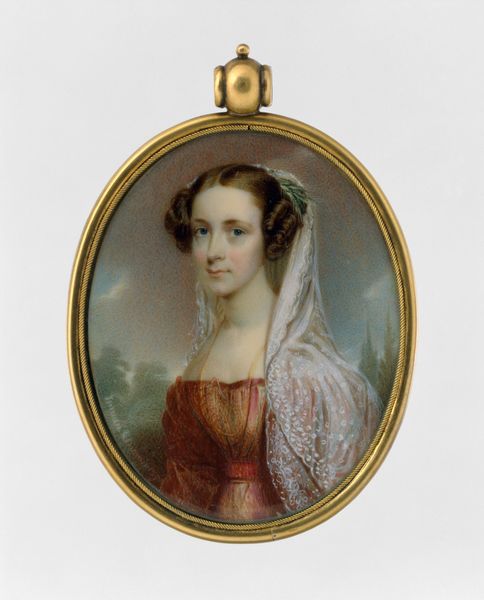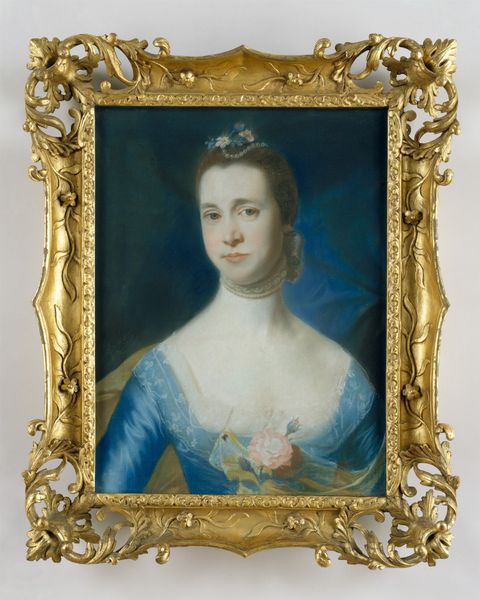
Dimensions: 1 1/2 x 1 1/4 in. (3.8 x 3.1 cm)
Copyright: Public Domain
Editor: Here we have "Mrs. Joseph Donaldson (Frances Johnston)," an oil-on-ivory miniature portrait painted in 1776 by Charles Willson Peale. I’m immediately struck by how intimate it feels, yet also incredibly formal due to the subject’s pose and powdered wig. What is your interpretation of this piece? Curator: It’s an excellent observation. Looking beyond the surface of a formal portrait of Mrs. Donaldson, we should consider what such an image represented within the social fabric of its time. Consider how she is depicted here; in an era defined by emerging bourgeois ideals, a portrait like this became a tool for asserting status. Does her gaze seem direct and self-assured, or more constrained by the expectations of feminine decorum of that period? Editor: I see your point about the assertion of status, especially given it’s a miniature—likely meant to be worn or kept close. But her gaze seems… controlled, maybe? Like she is very aware of the role she is playing. Curator: Exactly! We have to ask: what roles were available to women during this pivotal time, both politically and socially? Rococo portraiture, with its emphasis on delicate detail and elegance, often presented women within a narrow scope – think about beauty, motherhood, domesticity. What might a portrait like this conceal about the true complexities of a woman’s life in the late 18th century, amid the burgeoning calls for revolution? Editor: That’s fascinating. It really shifts my perspective. I was initially focused on the aesthetic qualities, but understanding the historical context makes it so much richer. I never considered it as a statement within early American society. Curator: Precisely, and by questioning whose stories get told and how, we can unravel hidden power structures embedded even within the seemingly innocuous beauty of a miniature portrait. What narratives were left out, or actively suppressed? That's the vital dialogue art can stimulate. Editor: Thank you. Now I understand this little artwork on a much larger scale.
Comments
No comments
Be the first to comment and join the conversation on the ultimate creative platform.
